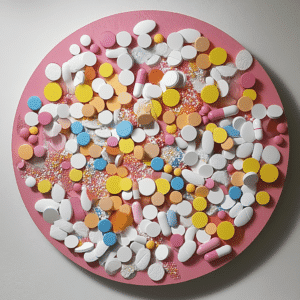The Subtle Onset of Alcoholism in Relationships
Alcoholism, a pervasive yet often overlooked issue, can stealthily infiltrate relationships, turning love and trust into suspicion and resentment. It’s essential to address this silent killer by understanding its progression and impacts. Awareness campaigns emphasize the visible damages, like drunk driving, but the emotional wreckage alcohol causes within relationships is equally devastating and often goes unnoticed. At Mothers Against Addiction, we see firsthand how alcoholism can tear families apart and believe it’s high time to shine a light on this insidious problem.
Early Warning Signs of Alcoholism
Early signs of alcoholism can be deceptively gentle, making them easy to ignore or dismiss. Partners may overlook:
Escalation to Dependency
The escalation from casual drinking to dependency is rarely dramatic. Over time, behaviors and excuses pile up, creating a hard-to-break pattern. Notable indicators include:
Alcoholism’s Impact on Relationship Dynamics
Erosion of Trust
Trust forms the bedrock of a healthy relationship, and alcoholism acts as a corrosive agent. When Daniel promises his wife he won’t drink at their son’s birthday party but ends up intoxicated, it deals a substantial blow to credibility and trust.
Communication Breakdown
Effective communication deteriorates with increasing alcohol consumption, distancing partners emotionally. Clara, who used to engage in meaningful conversations with her wife, now withdraws into silence or becomes aggressive, leaving her partner in constant uncertainty and stress.
Financial Strain
Alcoholism imposes a heavy financial burden, diverting funds from savings or essential needs to sustaining the habit. For example, Michael spends hundreds monthly on premium whiskey brands like Jack Daniel’s and Glenfiddich, sparking persistent financial disputes with his spouse over misspent household funds.
| Category | Details |
| Definition | Alcohol use disorder (AUD) is a chronic disease characterized by an inability to stop or control alcohol use despite negative consequences, health risks, and relationship damage. |
| Heavy Alcohol Use Criteria | – Men: >4 drinks/day or >14 drinks/week. – Women: >3 drinks/day or >7 drinks/week. |
| Key Indicators | – Ignoring negative consequences – Increased tolerance – Loss of control – Neglecting responsibilities – Experiencing withdrawal symptoms |
| Visible Physical Symptoms | – Slurred speech – Impaired coordination – Weight loss – Malnutrition – Facial redness |
| Stages of Alcoholism | 1. Increased drinking pattern (more frequent and larger quantities) 2. Binge drinking |
| Health Impact | – Weakens immune system – Higher susceptibility to diseases like pneumonia and tuberculosis |
| Genetics and Environment | – Approximately 60% hereditability – Influenced by the interplay between genetic predisposition and environmental factors, including parental drinking patterns. |
| Age-Related Risks | – Young adults (18-25) are at greatest risk. – 50% of young adults drank alcohol in the past month with about 60% engaged in binge drinking. |
| Diagnosis | According to DSM-5, AUD is diagnosed based on 11 symptoms. Severity: – Mild (2-3 symptoms) – Moderate (4-5 symptoms) – Severe (6+ symptoms) |
| Health Problems Associated | – Liver disease – Heart disease – Certain types of cancer – Depression |
| Chronic Nature and Relapse | AUD is a chronic brain disease with a high potential for relapse after cessation. |
| Prevalence and Trends | – Common medical condition – In 2022, approximately 20.8% of adults aged 18-29 had an AUD. |
The Ripple Effect on Family and Children
Children: Silent Sufferers
Children of alcoholics often bear the unseen brunt of their parents’ addiction. Emma, a talented high school student, finds her grades slipping due to instability at home, where her mother’s alcoholism instills a constant state of anxiety and uncertainty.
Perpetuation of the Cycle
The risk of alcoholic behavior perpetuating across generations is substantial. Studies show that children of alcoholics are four times more likely to develop alcoholism. Dylan, whose father is an alcoholic, faces a significantly increased risk of adopting similar behaviors in adulthood.
Effective Strategies for Addressing Alcoholism in Relationships
Open Communication
Opening an honest dialogue without judgment is crucial. Lisa, the wife of an alcoholic, uses ‘I feel’ statements, such as “I feel scared and alone when you drink,” to express her concerns without accusatory tones.
Seeking Professional Help
Professional intervention can pave the path to recovery. John and his wife Donna turned to organizations like Alcoholics Anonymous, utilizing their structured programs to break the cycle of addiction.
Support System
Building a strong support system of family, friends, and support groups is essential. Mike and his partner joined groups like SMART Recovery, finding solace and strength in hearing and sharing experiences with others who understand their struggles.
Healthy Alternatives
Replacing drinking with healthier alternatives and coping mechanisms can make a significant difference. Amanda and her husband opted for activities like yoga and hiking instead of nightly drinking, fostering a healthier and more connected relationship.
Innovative Perspectives on Combating Relationship Alcoholism
Technology’s Role
Technological advancements, such as apps that track drinking habits or virtual support groups, provide modern tools for individuals seeking to curb their dependency. Utilizing apps can create accountability and provide immediate support.
Holistic Approaches
Integrating holistic treatments such as meditation, acupuncture, and exercise can complement traditional therapy, offering a well-rounded approach to recovery. These methods aim to heal both body and mind.
Societal Change
Shifting societal perceptions and destigmatizing addiction can empower more people to seek help. Public campaigns by influential figures who have overcome alcoholism can inspire individuals to take that first step and seek assistance.
Alcoholism, the silent relationship killer, demands attention not only as a personal struggle but as a collective societal challenge. Understanding its progression, acknowledging its impact, and embracing innovative and supportive solutions can forge stronger, healthier relationships free from the chains of addiction. Mothers Against Addiction is dedicated to supporting parents grappling with their children’s addiction or the loss of a child due to addiction. Visit www.MothersAgainstAddiction.org to learn more about our services and support systems.
For some helpful resources and interesting reads, check out how to buy tickets for the Comedy mothership ‘s upcoming show, understand more about substance abuse, or even indulge in a Hunt a Killer game to lighten up your day.
Alcoholism: The Silent Relationship Killer
Trivia and Interesting Facts
Alcoholism can sneak up on anyone, transforming not just the person but also their relationships. Did you know that by volume, alcohol is the most abused substance globally, even compared to other forms of drug addiction? It often goes unnoticed until it’s wreaking havoc on personal and familial bonds.
Ironically, alcohol is as ingrained in our culture as sports or local pride. Take, for instance, the fans of the Baltimore Orioles. It’s not uncommon for a ballgame to be accompanied by a beer or two, but when does it become too much? The lines blur easily, resulting often in strained family outings or regretful mornings after what was supposed to be a fun night.
Interestingly, California, beyond its reputation as the California capital for entertainment and innovation, is also a hotspot for alcohol addiction treatment centers. It’s a hidden paradox where the battle against alcoholism stands silently amid the glitter of Hollywood. Shifting focus, in the advertising industry, brand Builders often tout a “drink responsibly” message, but the impact on relationships when alcohol control is lost can’t be understated.
Moreover, alcohol abuse often intersects with other forms of substance struggles, including the currently rampant Opioid addiction crisis. It’s alarming that frequent alcohol consumption can sometimes be a gateway to experimenting with or falling back on other more dangerous substances, further deteriorating the fabric of family life.
Every bottle, every glass, tells a story not often heard but strongly felt. And while we celebrate, commiserate, or just pass the time with a drink in hand, it’s vital to remember the underlying effects that alcohol can have, turning cherished relationships into a fragile whisper of what they once were. Each story of alcoholism is a call to awareness and action.
What is considered alcoholism?
Alcoholism, also known as Alcohol Use Disorder (AUD), is when a person can’t stop drinking even when it harms their health, safety, or relationships. It’s a chronic brain disease where the person craves alcohol, loses control over drinking, and needs more alcohol for the same effect.
What are 3 symptoms of an alcoholic?
Three symptoms of an alcoholic include ignoring negative consequences, experiencing withdrawal symptoms, and showing visible signs like slurred speech and impaired coordination.
What are the 4 types of alcoholics?
The four types of alcoholics are not universally categorized, but people often refer to heavy drinkers, binge drinkers, young adults with high drinking rates, and functional alcoholics as different types.
What is defined as alcoholic?
An alcoholic is someone who craves alcohol, loses control over their drinking, and has withdrawal symptoms when not drinking, despite the negative impact on their life.
Am I an alcoholic if I drink every night?
Drinking every night doesn’t necessarily make someone an alcoholic, but it could be a warning sign, especially if it leads to tolerance, dependence, or affects everyday life.
What is technically an alcoholic?
Technically, an alcoholic craves alcohol, can’t control their drinking, and needs to drink more to achieve the same effect, often leading to severe health and personal issues.
How to spot an alcoholic?
You can spot an alcoholic by their increased tolerance, loss of control over drinking, neglect of responsibilities, and withdrawal symptoms when they aren’t drinking.
What are five warning signs of alcoholism?
Five warning signs of alcoholism include increased tolerance to alcohol, drinking more over time, neglecting responsibilities, experiencing cravings, and showing physical signs like slurred speech and weight loss.
Does an alcoholic drink every day?
An alcoholic doesn’t necessarily drink every day, but frequent or heavy drinking, and the inability to stop despite wanting to, are clear indicators.
What is a type 1 alcoholic?
A type 1 alcoholic refers to those who start drinking later in life, typically after 25 years old, and it’s often linked to anxiety or emotional issues rather than constant heavy drinking from a young age.
What are 2 of the most common personality traits of alcoholics?
Two common personality traits of alcoholics are impulsiveness and a high tendency to seek new sensations or experiences.
What are the habits of an alcoholic?
Common habits of an alcoholic include drinking alone, hiding alcohol, making excuses for drinking, and neglecting personal and professional responsibilities.
What is stage 1 alcoholism?
Stage 1 alcoholism often begins with an increased pattern of drinking, like drinking more frequently or in larger quantities, and sometimes leads to binge drinking.
What qualifies someone as an alcoholic?
Someone is qualified as an alcoholic if they can’t control their drinking, need alcohol to function daily, and their drinking leads to significant impairments or distress in their life.
What is a functioning alcoholic?
A functioning alcoholic is someone who can maintain their personal and professional responsibilities while still having an alcohol use disorder, often hiding the extent of their problem.
What is classed as alcoholic?
Being classed as an alcoholic involves the inability to control drinking, needing more alcohol to get the same effect, and experiencing withdrawal symptoms.
What is determined as an alcoholic?
An alcoholic is determined by their inability to stop drinking despite the negative impacts on their health, safety, and relationships.
How much is considered alcoholism?
Consuming more than 4 drinks in a day or 14 in a week for men, and more than 3 in a day or 7 in a week for women, is considered heavy alcohol use, which can lead to alcoholism.
What qualifies as a functioning alcoholic?
A functioning alcoholic is someone who maintains a facade of normalcy, performing daily activities and responsibilities well, while still being dependent on alcohol and unable to cut down on their drinking.




























